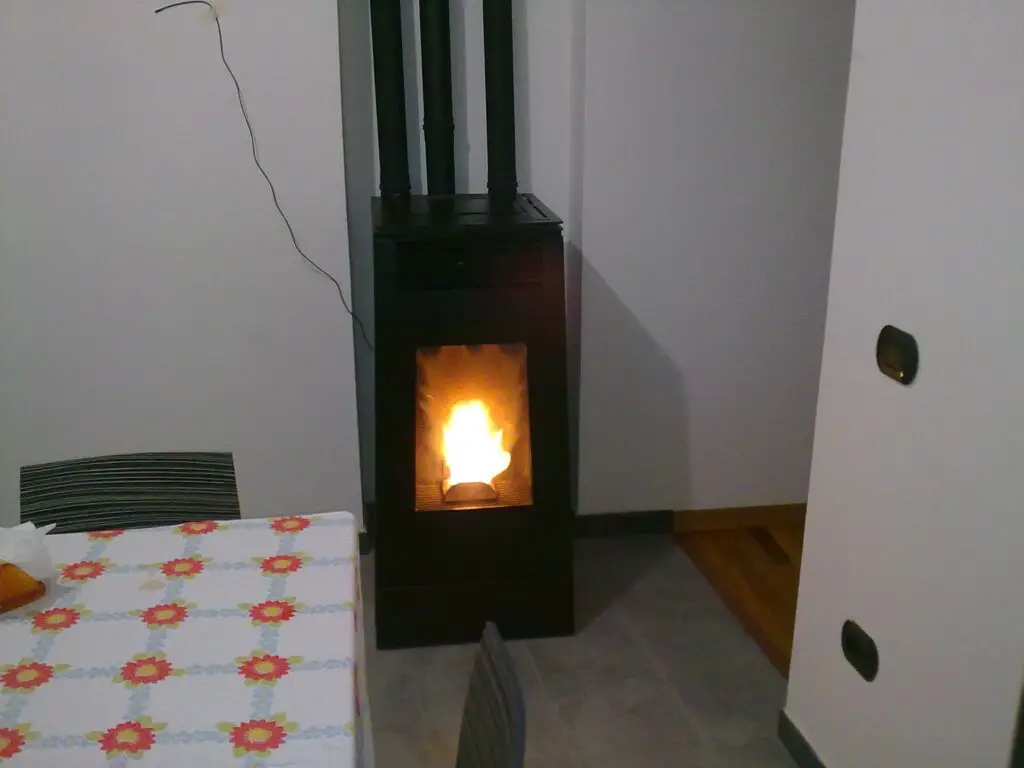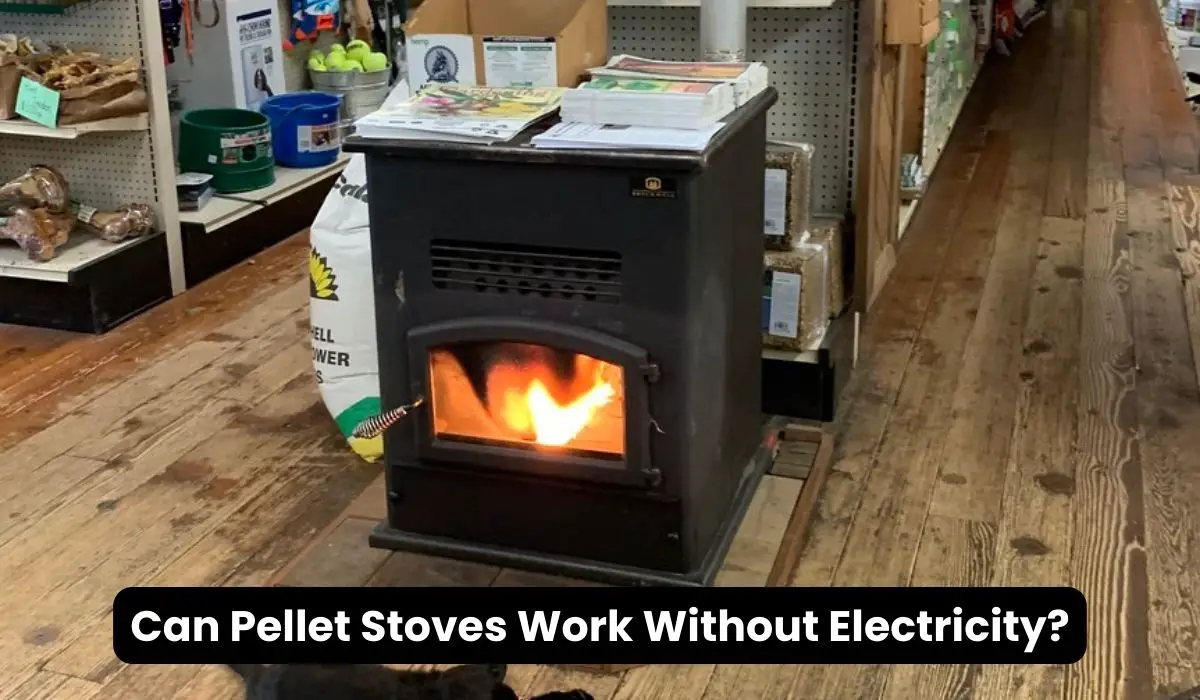In the realm of alternative heating methods, pellet stoves have gained popularity for their efficiency and eco-friendliness. However, a common question among those considering this heating option is: Can Pellet Stoves Work Without Electricity? It’s a pertinent query, especially for individuals in areas prone to power outages or seeking off-grid solutions.
In this article, we delve into the mechanics and possibilities surrounding the operation of pellet stoves without electricity. Understanding the nuances of this topic can empower homeowners and enthusiasts alike to make informed decisions about their heating needs while embracing sustainability and resilience.
So, Let’s unravel the mysteries behind the functionality of pellet stoves in the absence of electricity and discover whether they can stand as reliable heating sources in diverse circumstances.
Table of Contents
Can Pellet Stoves Work Without Electricity?

Pellet stoves, a popular alternative to traditional wood-burning stoves, often raise the question: Can they operate without electricity? The answer is both yes and no, depending on the type of pellet stove.
Some pellet stoves indeed require electricity to function correctly. Electricity powers critical components such as the auger, which feeds pellets into the combustion chamber, the fans that circulate heat throughout the room, and the electronic ignition systems that start the fire.
However, there are pellet stoves designed to operate without electricity. These models have manual ignition systems, allowing users to start the fire without relying on an electronic ignition. Additionally, they feature gravity-fed pellet systems, eliminating the need for a drill powered by electricity.
In essence, while many pellet stoves rely on electricity for ignition and pellet feeding mechanisms, there are models available that can function independently of electrical power sources. This feature makes them particularly appealing for use in areas prone to power outages or for individuals seeking off-grid heating solutions.
When considering a pellet stove, it’s essential to understand its power requirements and whether it aligns with your specific needs and circumstances. Whether you opt for a model that requires electricity or one designed to operate without it, pellet stoves offer many households an efficient and eco-friendly heating option.
How Do Pellet Stoves Work:

Pellet stoves, marvels of modern heating technology, offer efficient and eco-friendly ways to warm homes during chilly seasons. But how do these compact wonders work?
At the heart of a pellet stove lies its fuel source: pellets. These pellets are typically made from compressed sawdust or wood shavings, often recycled from wood processing facilities or sawmills. Their small size and uniform shape make them easy to handle and store.
When you load pellets into the stove’s hopper, they gradually feed into a combustion chamber via an auger—a corkscrew-like mechanism. Inside the combustion chamber, the pellets meet controlled bursts of air. This air, usually from an electrically powered fan, ensures optimal combustion by supplying oxygen to the burning pellets.
As the pellets ignite, they generate heat. This heat warms a heat exchanger—a series of metal tubes or plates—located within the stove. The heat exchanger absorbs the warmth from the burning pellets and transfers it to the air circulating within the stove.
Once the air absorbs enough heat, a distribution fan blows it out into the room, spreading warmth throughout the space. Some pellet stoves come equipped with thermostats, allowing users to control the temperature to their liking, much like conventional heating systems.
But what about the byproducts of combustion? Pellet stoves are designed with efficiency and cleanliness in mind. As the pellets burn, they produce less smoke, ash, and creosote than traditional wood-burning stoves. Any remaining ash from the combustion process typically accumulates in a removable tray for easy disposal.
Pellet stoves often incorporate advanced features like automatic ignition systems and electronic controls to ensure efficient and clean operation. These components help maintain consistent burning temperatures and minimize waste.
Additionally, many pellet stoves boast high-efficiency ratings—often above 80%. This means that a significant portion of the heat generated by burning pellets is effectively transferred into the living space, reducing energy waste and heating costs.
One notable advantage of pellet stoves is their environmental friendliness. Because pellets are made from renewable biomass materials, burning them discharges carbon dioxide, a greenhouse gas, but it’s roughly equivalent to the amount absorbed by the trees during their growth. This makes pellet stoves a carbon-neutral heating option when managed sustainably.
In summary, pellet stoves operate through innovative design and efficient combustion processes, while gas stove igniters provide convenient and reliable ignition, enhancing user experience and ease of use. By harnessing the power of pellets, these stoves offer a clean, convenient, and sustainable solution for keeping homes warm and cosy during colder months. Whether you want to reduce your carbon footprint or stay snug on frosty nights, a pellet stove might be the answer.
How Do Non-Electric Pellet Stoves Work?
Non-electric pellet stoves are marvels of simplicity and efficiency, offering warmth and comfort without needing electricity. Let’s delve into how these ingenious devices work.
Firstly, non-electric pellet stoves rely on the combustion principle to generate heat. Pellet stoves burn small, compressed pellets typically made from wood waste or agricultural biomass. These pellets are loaded into a hopper located at the top of the stove.
Gravity takes over once the pellets are loaded as they slowly trickle down into the combustion chamber. A controlled amount of air is introduced within the combustion chamber to ignite the pellets. This air is usually supplied by a manually operated or automatic damper system, which regulates oxygen flow into the combustion chamber.
As the pellets ignite, they produce a steady flame and heat. The combustion process is carefully controlled to ensure efficient burning and minimal emissions. Many non-electric pellet stoves feature sophisticated airflow systems and combustion technologies to optimize performance and reduce environmental impact.
The heat generated by the burning pellets is then distributed throughout the room via convection or forced air systems. In convection-based systems, heat naturally rises and circulates, warming the surrounding air. On the other hand, forced air systems use fans to push heated air into the room, ensuring rapid and even distribution of warmth.
One of the critical advantages of non-electric pellet stoves is their simplicity and reliability. Unlike electric models, which rely on complex electronic components, non-electric pellet stoves can operate even during power outages or off-grid situations.
Moreover, non-electric pellet stoves are often praised for their high efficiency and low fuel consumption. The controlled combustion process ensures the pellets burn cleanly and produce maximum heat output with minimal waste.
In summary, non-electric pellet stoves offer a cost-effective and environmentally friendly heating solution for homes and cabins. By harnessing the power of combustion and simple mechanical systems, these stoves provide reliable warmth and comfort without needing electricity.
How To Use Pellet Stove During Power Outage:

When facing a power outage, knowing how to utilize your pellet stove can be a game-changer for maintaining warmth and comfort in your home. Here’s a straightforward guide on how to effectively use a pellet stove during a power outage:
1. Ensure Adequate Fuel Supply
Before any emergency strikes, keeping a sufficient supply of pellets on hand is crucial. Pellets are typically stored in bags, bins, or containers. Stock up well in advance to avoid running out during a power outage.
2. Perform Regular Maintenance
A well-maintained pellet stove operates efficiently and reliably. Regularly clean the stove and its components, including the burn pot, ash pan, and exhaust vent. This helps prevent malfunctions and ensures optimal performance when you need it most.
3. Install Battery Backup
Consider investing in a battery backup system for your pellet stove. This backup power source kicks in automatically during a power outage, allowing your stove to operate normally. It’s a worthwhile investment for uninterrupted warmth during emergencies.
4. Keep Ventilation Clear
Proper ventilation is essential for the safe operation of your pellet stove. Ensure the stove’s air intake and exhaust vents remain clear of obstructions, such as snow, ice, or debris. Blocked vents can impede airflow and cause the stove to malfunction.
5. Monitor Carbon Monoxide Levels
Like any combustion appliance, pellet stoves produce carbon monoxide (CO). To prevent CO buildup and ensure safety, install carbon monoxide detectors near sleeping areas and on every level of your home. Test the detectors regularly and replace batteries as needed.
6. Plan for Extended Outages
In a prolonged power outage, you may need to rely on your pellet stove as a primary heat source. Have a plan in place to conserve fuel and maintain comfortable indoor temperatures. Consider using alternative heating methods or relocating to a warmer area if necessary.
7. Practice Fire Safety
Always exercise caution when operating your pellet stove, especially during emergencies. Keep flammable materials away from the stove and never leave it unattended while in use. Have a fire extinguisher nearby and know how to use it effectively.
8. Stay Informed
Keep abreast of weather forecasts and emergency alerts in your area. Knowing when a power outage will likely occur allows you to prepare accordingly and minimize disruptions. Stay connected with neighbors and community resources for support during emergencies.
Following these guidelines, you can effectively use your pellet stove during a power outage, ensuring comfort, safety, and peace of mind for you and your family. Remember, preparation is critical to weathering any storm with confidence.
Conclusion:
The question of whether pellet stoves can function without electricity sparks curiosity and practical considerations alike. As we’ve explored, while pellet stoves typically rely on electricity to power specific components such as fans and ignition systems, there are indeed models available that can operate without it. Homeowners can make educated decisions based on their specific needs and circumstances by understanding the nuances of these stoves and the various mechanisms at play.
Whether it’s for off-grid living, backup heating during power outages, or simply reducing reliance on electrical systems, the versatility of pellet stoves offers an attractive solution. With technological improvements and the growing demand for energy-efficient alternatives, the landscape of pellet stove options continues to evolve.
As we embrace sustainability and resilience in our homes, the quest for reliable, electricity-independent heating solutions remains pertinent and promising.



